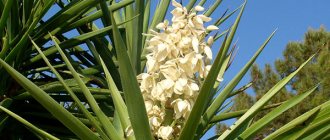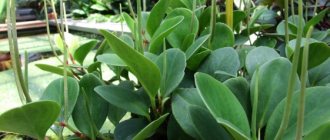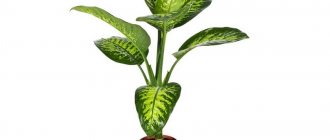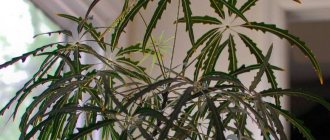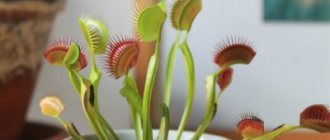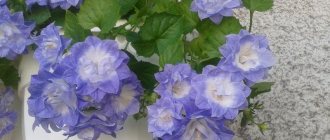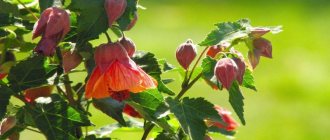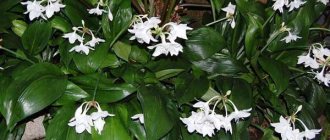/Accessories and decor/Gardening/
When an anthurium takes up residence in the house, all attention involuntarily turns to it: juicy dark green leaves and a bright cover of inflorescences are both a spectacular and very neat appearance of a houseplant. The non-tanical names “male happiness” and “red tongue” also came into use.
The whimsical leaf-shaped blanket looks shiny and slightly fake, like it's made of plastic!
By the way, the colored blanket, which many people mistake for the flower itself, can be not only red, but also orange, pink, white and light green.
The best qualities of anthurium:
- Caring for anthurium at home is not difficult even for beginners and lazy gardeners;
- The plant is quite suitable for apartments with low light levels (which is especially pleasing for Russians in autumn and winter);
- The plant can delight you with flowering for a very long time: almost all year round;
- This is a great option for cutting: the flowers will last in water for a surprisingly long time (about a month).
If you accidentally find out about a birthday or a date, the anthurium can donate its beautiful scarlet flowers so that its owner does not go empty-handed. Interestingly, Russia initially became acquainted with anthurium in bouquets, and then the plant took root as a potted plant.
Important: anthurium leaves may contain calcium crystals that cause irritation on delicate (for example, children's) skin. Also watch your curious cats who like to chew indoor flowers in their spare time: anthurium is an unsafe snack for them.
It is believed that the plant brings success and reinforces the perseverance and confidence of men, and if it is put in a combo with spathiphyllum (the so-called “women's happiness”), their company will give mutual understanding in a couple and protect the family.
Lighting (where is it better to place the pot at home)
Anthurium readily blooms in diffused but bright light. On the north window, it actively stretches out in search of light and does not look so impressive, which is why some apartments use additional lighting. Diffused partial shade reminds the plant of its native tropics, so western and eastern windows are ideal, and in the south in the summer you need to make sure that the anthurium does not get burned: shade it or place it in a corner.
Temperature
The indoor flower is quite friendly to room temperature or a couple of degrees lower.
- Summer option - 20-25 degrees.
- Winter - 16-18.
Keep in mind that close proximity of the plant to heating devices is undesirable, and on hot summer days the pot should be removed from the window. On a too cold windowsill, you can turn on a lamp for warmth, and also carefully monitor drafts: anthurium, like many other plants, does not tolerate them.
See also:
- How to care for Schefflera at home
- Caring for indoor hydrangea at home
- How to care for dracaena at home
- Caring for Zamioculcas (dollar tree) at home
- How to care for begonia at home
- How to care for a money tree (crassula)
- How to care for myrtle at home
- How to care for hibiscus (indoor Chinese rose) at home
- How to care for Kalanchoe at home
- Tree in the room: how to care for Ficus Benjamin at home
- How to care for geraniums at home - a guide for beginners
- How to care for orchids - 7 steps for a beginner
- How to care for violets at home
Dakota (Anthurium Andraeanum 'Dakota's)
A perennial, evergreen, beautifully flowering plant, belongs to the Araceae family. Representatives of this genus are distributed throughout tropical and subtropical America. Anthurium Dakota is a very famous and widespread variety.
Anthurium Dakota is a medium-sized shrub. With large leaves and a noticeably divided, heart-shaped base, slightly elongated.
The shape of the inflorescence attracts special attention. Glossy blanket, with deeply divided lobes at the base
Very large in size 14-23 cm.
The spadix is yellow, thick and has many flowers. Anthurium Dakota evokes admiration and delight; you can admire it endlessly. This well-known and widespread variety is often used for decorating apartments and offices.
Thanks to the bright color and large size of the bedspread, it is simply impossible to pass by the Dakota anthurium without paying attention to it.
Location and care
Cultivating this plant indoors is relatively easy. Anthuriums love abundant illumination with diffused light, without direct sunlight. From excess light, discolored spots and burns appear in the center of the leaf blades, and the tops turn brown.
Anthuriums grow well on eastern and north-eastern windows. On south-eastern, western and south-western windows, from 12 to 17 hours, plants must be shaded.
Anthurium Dakota is characterized by good resistance to temperature drops down to 14 C. For good development, a noticeable daily temperature difference of 5-10 C is required. The optimal air humidity in the room where the anthurium is kept should be 60-80%. Plants do not like drafts; this causes their leaves to curl.
Watering and fertilizing
Anthuriums are watered evenly throughout the year, only slightly reducing moisture in winter, during the dormant period. At this time, it is advisable to keep the plant at a low temperature and water it with water 2-3 s above room temperature. Watering is carried out only with soft water; anthuriums are very sensitive to hard water; when it is used, plant growth slows down and flowering stops. Also, watering with hard water causes darkening of the tips of the leaf blade.
In summer, on hot days, it is useful to spray the plant, but you need to make sure that water does not get on the flower, as dark spots may appear on it.
During the period of active growth, from the end of February to the beginning of October, it is necessary to feed the plant once every 10-15 days with a full range of mineral fertilizers.
Feeding must be done carefully, not overfeeding, as this can negatively affect the condition of the plant. If an excessive amount of fertilizer is added to the substrate, the lower leaves turn brown and you can return them to their natural color by reducing the dose of fertilizer.
Watering
Although anthurium sometimes misses the tropics, it does not need any tropical rains when watering. Optimal watering schedule:
- In summer - 2-3 times a week.
- In winter - once a week.
It is convenient to focus on the condition of the top layer of soil and water only after it dries out. Water should not stagnate to prevent root rot, so pour excess water from a tray or saucer.
Important: ice-cold tap water will not work. We leave the water to stand for 24 hours or collect rainwater. Pay attention to the water in your area: too much lime can cause leaves to turn yellow. It is better to always keep clean, settled water near the flower.
Types of homemade caladium with photos and names
There are more than 15,000 species and varieties of this luxurious plant in the world. But only a few are easily adapted to indoor floriculture.
Caladium bicolor
The most common species among gardeners. The leaves of Caladium bicolor have a lush green color with a pattern of white veins, stripes and spots. The edge of each leaf of the plant is framed by a dark green border.
Caladium Humboldtii
This species is easy to propagate and will easily tolerate changes in climate and watering regime. The leaves are thin and may vary in color intensity. Most often they have white and even silvery spots and stripes on a dark green background. The plant is compact and easy to propagate. With proper lighting, you can achieve lush leaves even in winter and avoid dormancy.
Caladium schomburgkii Schott
Attractive in appearance with red leaf plates and a silver pattern on them. The underside of the leaves is paler in color. Pobedi are elongated, oval, slightly reminiscent of a heart, large – length up to 15 cm, width – up to 12 cm.
Humidity
But moist air is a necessity for our beautiful plant. Anthurium is happy with a daily shower from a spray bottle, or even several times a day. Important: reject the cob with the cover when spraying, since moisture is only beneficial to the leaves of the plant.
Remember to regularly wipe the leaves with a damp cloth or even take a cool shower in the bathroom, covering the soil and cobs.
If the air in your apartment is very dry, you can resort to an additional trick: line the pot in some container with expanded clay and moisten it daily. The stones will release moisture as an autonomous air humidifier.
Photo of anthurium in the interior
Wintering
It's a shame that such a spectacular plant only produces color for one season. Luckily, you can enjoy the same plants next year if you remember to dig up the tubers and bring them indoors to store for the winter.
You can store them like this:
- Wait until the leaves begin to fall and turn yellow. Dig up the entire plant.
- Wash the soil to expose the roots and tuber.
- Store in the garage or covered for about two weeks.
- Remove the leaves and place the tubers in a pot of peat moss or sphagnum moss and cover well.
- Label the variety if you have several, and store in a cool, dry place until spring.
In temperate zones, caladium tubers are hardy and do not need to be dug up to survive the winter. Just leave the tubers in the ground and wait for the plants to grow again in the spring.
Top dressing
All indoor plants of this type adhere to the usual seasonal diet: they need feeding in the spring and summer. Two or three times a month will be enough.
- Fertilizers for aroid plants and orchids are suitable for anthuriums.
Carefully study the instructions for applying fertilizers: overfeeding a flower is just as bad as neglecting fertilizers.
- Do not apply fertilizer on a hot summer day: it is better to do it in the morning so that the components do not burn the plant under the intense sun.
Anthurium male flower how to care
Flower growers consider the plant to be quite delicate, since in order for it to feel comfortable and grow well, it needs careful care. To do this, the owners of the flower will have to work hard to create conditions for it that are close to tropical. The humidity in the room should be high, the temperature should also correspond to the tropical climate, and the sun's rays should not directly hit the plant.
Varieties of male happiness
In the plant classification, it is already possible to consider about 800 subspecies, among which there may be epiphytes and semi-epiphytes, which have a lot of differences from each other.
You cannot grow many of the species on a windowsill, because they will require greenhouse conditions.
The first type presented is the most common among lovers of original indoor flowers. It contains the largest palette of colors and shades of the heart-shaped bedspread.
Anthurium Andre male happiness (A. Andreanum)
The leaves of this variety are brilliant, deep green in color. The height can reach up to one meter. The flower has one large heart-shaped petal and is unusually shiny.
Within the varieties Anthurium Andre
Red varieties of anthuriums
- Arizona
- Dakota is the most popular type
- Purple Love reddish purple
- Belize
Black anthurium, the most exotic and unusual species. Characterized by dark red buds, and in full bloom they become black cherry, varieties:
- Black Queen
- Black Prince
- Choco with chocolate blossoms
Green anthurium, very unusual, with flowers and leaves of the same color, differing in different shades. The most interesting and frequently encountered:
- Manaka
- Midori
- Green King
Pink anthurium, with delicate and fragile inflorescences, against a background of dark green waxy foliage.
- Olfers
- Pink Champion
- Lindsen
- Amis
- Cheers
- Minnesota (Minnesota) with large salmon pink flowers
White, with pristine light inflorescences and green waxy leaves. Looks like spathiphyllum due to its color. It is believed that white anthurium attracts female happiness to its owner.
- Acropolis
- Champion
- Polaris
Anthurium yellow is called so, quite a stretch, since there are varieties with a color that is not purely yellow, but rather orange-red
- Marasol
- Princess Orange
- Avento
- Princess Alexia lemon yellow
- Casino
Exotic colors of the variety:
- Lilac – Sensa
- Purple – Princess Amalia
- Lilac anthurium
- Princess Alexia Blue - sky blue
- Picasso Blue bluish blue
Two-color anthurium:
- Baby Boomer is painted in green and red colors, a little orange at the transition
- Princess Amalia Elegance light pink, with light green transition to the base
- Jade is whitish - light green
- Amalia Hot Lips (Hot Lips) salmon-light green color gives an elusive charm to the blooming delicate inflorescences that sway on graceful legs
Crystal (A. crystallinum)
This type of plant is classified as decorative deciduous. It looks effective thanks to its dark green velvety foliage, on which a silvery mesh of veins is formed.
Scherzer (A. Scherzerianum)
An epiphyte whose shoots are shortened and endowed with matte leaves decorated with black spots. Spiral-shaped cob. The flower can reach up to 30 cm. The spathe is orange-red, while the spadix has an orange or yellow tint. This species is easiest to grow at home.
To improve the premises and give them an original look, purchase the Hooker, Baker, five-leaf, climbing or other varieties.
The most recognizable among all plants are the variegated varieties, which have a lot of similarities with each other. All of them are short in stature with large dark green leaves, on which velvety white veins are visible.
The only difference is the leaf petiole. The majestic anthurium (A. Magnificum) consists of a tetrahedral one, while the crystal one has a round shape.
Transfer
Anthurium needs to be transplanted if:
- It arrived from the store in a shipping pot (the soil in such a substrate is dry, and the pot has large drainage holes, from where the water drains down and stagnates in the pan).
- If the plant has already lived with you for a year or two (this is the period during which the anthurium begins to need fresh soil).
Replanting stimulates more abundant flowering and plant growth.
Choosing a pot
Anthurium loves narrow and small pots. Transplanting into a very spacious home will only affect the appearance of “babies” in large numbers, but not the decorative appearance of the anthurium itself.
Therefore, if the bush has already noticeably outgrown its pot, buy a new pot with a diameter of only 1-2 centimeters larger.
Soil selection
The easiest way to purchase soil for replanting is in the store among ready-made soil mixtures for plants of the aroid and orchid families. This is a light, airy soil that tropical anthurium will like.
Soil preparation
Options for those who want to make their own soil:
- From ready-made soil for begonias with the addition of coconut fiber and coal;
- From peat and humus with the addition of pine needles, coal and brick chips;
- From turf soil, river sand, humus and pieces of coal.
How to transplant an anthurium step by step:
- Pour enough drainage stones into the new pot;
- Fill the pot halfway with soil;
- Carefully transfer the plant from the pot;
- Place the plant in the center of the pot;
- We fill up the soil;
- We water;
- We install it in the chosen place in the house according to the advice on lighting and temperature.
Important:
- Anthurium has very fragile roots that need to be freed from the ground gently and carefully press the soil with your fingers when replanting.
- Anthurium needs aerial roots for life; they should not be trimmed to improve its decorative appearance. Spray them as well as the leaves.
- We do not deepen the root collar when transplanting.
Diseases and pests
Anthurium diseases. Anthurium can develop rot if the soil does not have time to dry out between waterings - it should dry out at least a third of the height - especially at low room temperatures. Another problem is anthracnose, which can be detected by the leaves: they begin to dry out, starting from the edges.
Anthurium does not bloom. The reason may be the presence of pests or diseases, as well as generally improper care - read the care recommendations above.
Anthurium turns yellow. If the leaves of an anthurium turn yellow, this is a sign that the roots of the plant have begun to rot, which requires surgical intervention. The plant is removed from the soil, all rotting parts are removed and healthy parts are planted in a new fresh substrate. Water carefully, since it is improper watering that leads to such consequences.
The tips of the anthurium leaves turn black. Excess calcium. Fertilizing should be done at half the dose.
Spots on anthurium leaves. May appear due to overwatering.
Anthurium is drying. There are several options here, and they are opposite. This can be either an excess of minerals or a lack of them; both over- and under-watering. The soil may need to be replaced.
- Photo of white perone with species names
Anthurium leaves curl. There can be many reasons: the plant is in a draft or in direct sunlight, the air humidity is too low or the plant does not have enough light.
Anthurium pests. Anthurium is damaged by aphids, spider mites and, especially, scale insects.
Planting and propagating anthurium (step-by-step instructions)
Reproduction by children
If your anthurium has already grown and produced “babies,” the easiest way to propagate the plant is this way:
- Carefully separate the babies (best with your hands);
- Treat the cuts with crushed coal;
- Place the children in separate pots;
- Not abundantly, but water regularly;
- Place the pots in a warm place out of direct sunlight.
Soon the plant will take root and begin to grow.
View this post on Instagram
I don't have many plants. This is what my sister decided and brought me 3 anthurium babies, separated from the mother bush. She said that they changed the seat at work

